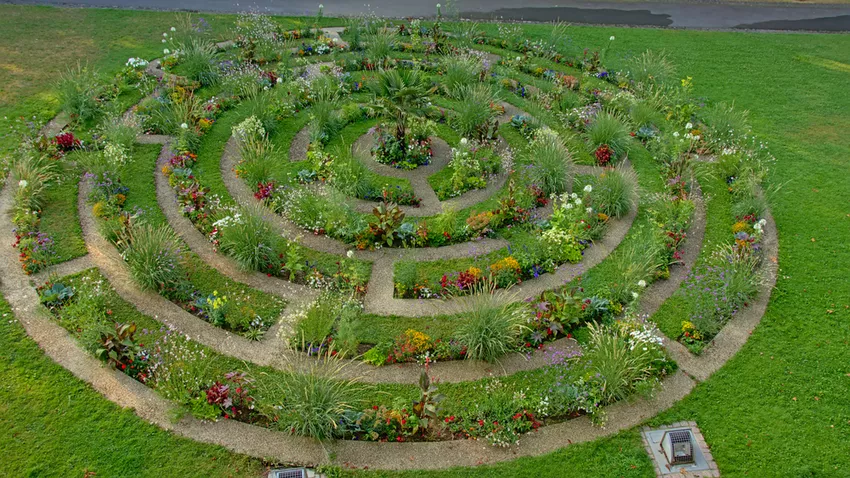- Choice of location
- Fill up the flower bed or plant at ground level?
- The optimal design of the round flower bed
Who actually says that a flower bed always has to be rectangular? Round or curved shapes are particularly effective in larger lawns. You can fill these flower beds with the same plants as conventional beds, provided, of course, that the location suits them. However, there are a few special points to consider when designing so that the overall result is harmonious.
 Round flower beds are particularly elegant
Round flower beds are particularly elegant
Choice of location
While you can create a rectangular flower bed almost anywhere, round shapes take up a lot of space. Such a bed is best used in the middle of a larger open space - for example in the lawn. But you can also create it in the classic way as the center of the garden, to which all paths lead. If, on the other hand, a corner is to be planted, other forms do better: Such locations are ideal for cake-shaped or semi-circular beds, while longer stretches along a wall, fence or house wall are predestined for long, narrow and angular plants. Due to the exposed location, such a round bed - the gardener also speaks of an island bed - will most likely be in a very sunny location. The choice of plants should be planned accordingly: Not all flowers and perennials tolerate blazing sun and heat.
Fill up the flower bed or plant at ground level?
You can put the plants in the bed at ground level, but you can also build a round hill bed. This has several advantages: not only that the flower arrangement is more eye-catching due to the elevated position; Mound beds also ensure a sufficient supply of nutrients and heat development. To create a hill bed, first dig a deeper pit that you fill with organic material - such as shredded twigs and branches, unripe and mature compost, lawn clippings, leaves, etc. Finely crumbly potting soil follows at the top, whereby the bed should always have the typical hilly shape.
The optimal design of the round flower bed
But no matter whether hilly or at ground level, round flower beds are always planted according to this pattern:
- tall flowers and perennials always go in the middle
- the lower a plant is, the more it moves to the edge of the bed
- in this way you achieve a visually appealing result
- it also ensures that all plants receive sufficient light
- low ground covers should always be in the foreground
The edge of the bed should be secured with lawn curbs or similar so that the plants do not overgrow the neighboring lawn or the grass does not crowd out tender young plants.
tips
Select the planting so that there are no bare spots during the growing season. Above all, make sure to choose flowering plants for their foliage as well: Pretty foliage makes the bed attractive even after the flowering period.